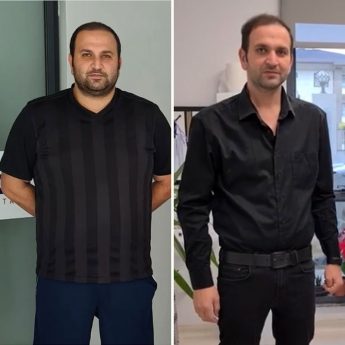Revision Surgery is the replacement of obesity surgeries that have been performed on an obese individual before, but with insufficient or unsuccessful results, with a different method of obesity surgery.

In What Cases Should It Be Considered?
- In cases where the patient does not comply with the rules of diet and nutrition after obesity surgery,
- Due to the inability to choose the appropriate treatment model for the patient,
- In a problem such as the surgeon has not completed the learning curve, that is, if a technically incorrect operation has been performed,
- It comes to the agenda in cases such as encountering complications of surgery.
How Should Revision Surgery Be Decided?
- The doctor’s expertise in this matter should be assured,
- The patient’s health condition should be examined in detail in terms of the whole body,
- All examinations such as endoscopy, tomography should be performed before surgery,
- The wrong eating pattern made under the guidance of a dietitian should be changed and the nutrition program that needs to be done should be created. The importance of nutrition in obesity surgery should be transferred to the patient.
How Is It Applied?
Revision Surgery; first of all, all examinations should be performed and the individual’s health conditions should be taken into account. Then the right decision should be made by thinking healthy. The patient should be told in detail that this operation will be more difficult than the first operation and that the recovery time will be longer.
Like all other bariatric operations, it is performed by laparoscopic method. But if there is an advanced degree of adhesions in the stomach after the first obesity surgery or if conditions such as bleeding due to these adhesions are encountered, open surgery can be performed, although rarely.
Revision After Sleeve Gastrectomy
Sleeve Gastrectomy, that is, a Sleeve Gastrectomy can be performed after a Tube Stomach operation. This ensures a weight loss of about 45%.
In cases where there is insufficient weight loss or when there is a reverse weight gain;
Although Laparoscopic Sleeve is a very successful operation for weight loss, insufficient weight loss can be observed in 5 or 10 percent of patients.
In order to control the uncontrolled leakage complication that may occur after surgery;
Most leakage conditions can be treated without surgery. But despite this, sometimes very difficult situations are also encountered. In such cases, a return to the Roux-en-Y Bypass is made.
Cases when reflux symptoms increase;
According to studies conducted in this area, reflux symptoms can be observed in 1 out of every 5 patients. There are situations that can be treated with medication, as well as situations that require revision surgery.
Development of staple line stenosis;
If the new shape of the stomach is made too narrow, first of all, it is tried to expand it by endoscopic method. If this procedure is unsuccessful, revision surgery is performed.
Stomach enlargement;
As a result of improper nutrition and non-compliance with the rules of nutrition, enlargement of the stomach and, in connection with this, back weight gain can be observed.
Revision After Gastric Bypass
- If not enough weight has been lost or there has been a weight gain back,
- Marginal ulcer formation, (such as gastrojejunostomy, truncal vagotomy)
- Anastomotic strictures,
- Metabolic disorders, (such as severe malnutrition, vitamin deficiency, hypoglycemia, hypocalcemia)
- Gastro-gastric fistulas,
- Bag expansion,
- Dumping Syndrome,
- Roux stasis syndrome,
- Excessive weight loss in a harmful way to health, (88% of patients after revision begin to gain weight again.)
- Inability to tolerate bypass
Revision After Gastric Banding
- Displacement of the band into the stomach,
- Tape erosion,
- Bag expansion,
- Inability to lose enough weight or regain weight gain,
- Displacement of the port of the tape,
- Esophageal enlargement,
- Development of reflux,
- It is considered in cases where the tape cannot be tolerated.
After the gastric clamp (band), RNY Gastric Bypass can be performed with a revisional procedure. The stomach clamp that was applied before is removed and then bypass surgery is performed.
In 8 out of every 10 cases, the removal of the clamp and its conversion to bypass is performed within a single operation. If the gastric band is very irritated in the stomach, the band is removed and gastric bypass surgery is performed after 3 months.























